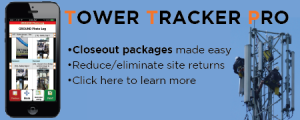Podcast: Play in new window | Download | Embed
Subscribe: Apple Podcasts | RSS
Did you ever hear of carrier aggregation and wonder, “What is Carrier Aggregation?”, at least in the wireless world. How does it work and how will it help improve bandwidth and what does it have to do with 5G?
Well, I am so glad you asked! Let’s do this!
Carrier Aggregation, a LTE feature that bonds together multiple carriers to make it look like on big channel or pipe. An excellent explanation can be found at http://www.3gpp.org/technologies/keywords-acronyms/101-carrier-aggregation-explained where they explain in detail how it’s done.
Let me give you the high level of what it is, how it works, and why we love it.
It can be used on TDD or FDD, in fact, the beauty of aggregation is that it crosses formats and puts together into one. This was the foundation for LAA and LWA, (Licensed Assist Access and LTE Wi-Fi aggregation. The key here is that the LTE carrier can use multiple carriers look like one big carrier, regardless of where the bandwidth comes from. This is exciting because we used to be limited to one carrier. Now we can have many carriers all working together to reach higher than 100 Mbps throughput speeds!
How can they do that? Well, in this data-centric world we could use multiple RF sources if both sides can receive and transmit, then the data can be aggregated together. The RF becomes the pipe. The devices must be able to receive all the spectrum to get the benefits.
The best examples are AT&T who was able to use multiple bands to jump from 10.69 Mbps to 15.18 Mbps using carrier aggregation. Sprint can aggregate 3 carriers in the 2.5GHz band to get more throughput than almost anyone on a standard LTE carrier.
We still rely on the coverage to be good. We also need to know that the carrier has aggregation functions enabled. Here in the USA, anyone using LTE has this enabled. If not, get on with it.
The goal is to get past 1Gbps in throughput, and the way to do that is by using the spectrum we have and putting it all together to look like one big pipe. It may need help like massive MIMO and 64 and/or 256 quadrature amplitude modulation, (QAM) to make it happen along with carrier aggregation.
How is this done? Well, according to Carrier Aggregation for dummies, link below, we can use 2 10MHz channels along with 2×2 MIMO to get 150Mbps, then we jump to 4CA, 4 carriers of 10MHz each along with 2×2 MIMO to get 600Mbps of throughput. Awesome! The 600Mbps is happening today and should be out in the real world soon! I can’t wait!
So how is it done? The carrier aggregation is done when the data is controlled by the core and a header is attached to the packets going out to the device so that the device can piece them all back together. The caveat is that the transmitting device must send all the data at the same time and the UE device has to receive, (hear), all the data at the same time. The device will put the blocks all back together, so they look like a huge pipe of data being push into your device! BAM! Big data throughput shoved into those tiny devices over the air!
Let’s simplify, we can take channels of 20MHz, 15MHz, and 5MHz over the air and add carrier aggregation to talk to the device. The device should have two receive antennas, and the transmitter should have two transmit antennas. The data all goes out to the device at the same time, and when the packet is sent, it thinks it is going through a 40 MHz pipe, and this equates to a downlink rate of 300Mbps using 64 QAM using 2×2 MIMO. The 2×2 MIMO is the antennas all working together. The 64 QAM is the modulation rate. Do you feel it? Do you feel the power of aggregation making wireless connections feel more and more like fiber? What was once a  spattering of spectrum is slowly becoming a beautiful orchestra all playing together as one solid melody. Again, I wish I could hear the beauty, but all I can do is impress you with a speed test on my smartphone.
spattering of spectrum is slowly becoming a beautiful orchestra all playing together as one solid melody. Again, I wish I could hear the beauty, but all I can do is impress you with a speed test on my smartphone.
Modulation is increasing as 256 QAM is being rolled out, three carrier aggregation is here today, and we are using LTE in conjunction with more spectrum. In theory, using TDD on 2.5GHz should put Sprint in prime position to make the leap to 5G massive broadband in no time, that is, if they can get out of their own way to make that happen. Instead, I see T-Mobile making great things happen with the spectrum they have. There is a company that I wish had more spectrum to pump massive data out to the masses, but let’s put our personal opinions aside.
Do you get what is happening? The shift of new breakthroughs is increasing wireless throughput to improve. I mentioned massive MIMO in an earlier post, I explained TDD and FDD, now you have more on aggregation to show you that the wireless 1Gbps is just around the corner, possibly in 2019.
Sign-up to get all your updates!
Remember when carriers relied on the FCC to release more and more spectrum, that should be less of an issue with aggregation and massive MIMO. We should see new throughputs as well as efficiencies and loading improvements throughout the next several years.
Now, you are wondering why we need this, fair question. This is going to be one more stepping stone to 5G and the throughput requirements that are expected. You see, it is not done with just one leap in technology, it is done in steps. To get to 5G we may need new hardware, but the goal is to put out the box and antennas that will last for over five years, nearly an eternity in technology. If you do not believe me, ask yourself when the last time you got a new smartphone, is it over five years old? Seriously, think about it. Is it over five years old? Why did you get a new one? Nuff said!
So there you have it, yet another leap made towards the 5G massive broadband dream! Aggregation is incredible! It’s being done today! Combine that with massive MIMO, and we have liftoff to the beginning of 1Gbps to every new smart device out there in 2020. Do you feel the power of broadband in your hand! Who needs a cable connection when your smartphone can be the access point in your house. Triple play already exists on your smartphone. With it you can watch Netflix on any device, after all, you don’t want to miss a single episode of Game of Thrones! Binge watch baby, don’t stop! You have unlimited data.
Resources:
- https://wade4wireless.com/2017/01/16/an-overview-on-tdd-and-fdd-formats/
- https://wade4wireless.com/2015/09/08/lwa-laa-lte-u-and-wi-fi/
- http://www.3gpp.org/technologies/keywords-acronyms/101-carrier-aggregation-explained
- https://www.google.com/url?sa=t&rct=j&q=&esrc=s&source=web&cd=17&ved=0ahUKEwju06m-yuvXAhWrlOAKHRPODAUQFgiDATAQ&url=http%3A%2F%2Fwww.qorvo.com%2Fresources%2Fd%2Fqorvo-carrier-aggregation-fundamentals-for-dummies-volume-1&usg=AOvVaw2bn2oQBalhEQ_Q3N67pTXR
- https://wade4wireless.com/2017/11/27/what-is-massive-mimo/
- https://wade4wireless.com/2015/08/12/carrier-aggregation-and-optimization/
- https://wade4wireless.com/2015/08/10/wi-fi-lte-lte-u-and-aggregation/
- http://niviuk.free.fr/lte_ca_band.php
Be smart, be safe, and pay attention!
See Ya!
Please! Follow me on WordPress, Amazon, Twitter, LinkedIn, or Facebook. Just click and follow! Thank you!
Get all your updates via email!
Sign-up to get all your updates!
The foundations below do beautiful work, helping families in their time of need. Climbers often get seriously injured or die on the job. The foundations below support those families in their time of greatest need!








 Putting together your smart city tech solutions, planning, development, and more….TechFecta! Guiding you to a better plan through consulting!
Putting together your smart city tech solutions, planning, development, and more….TechFecta! Guiding you to a better plan through consulting!
